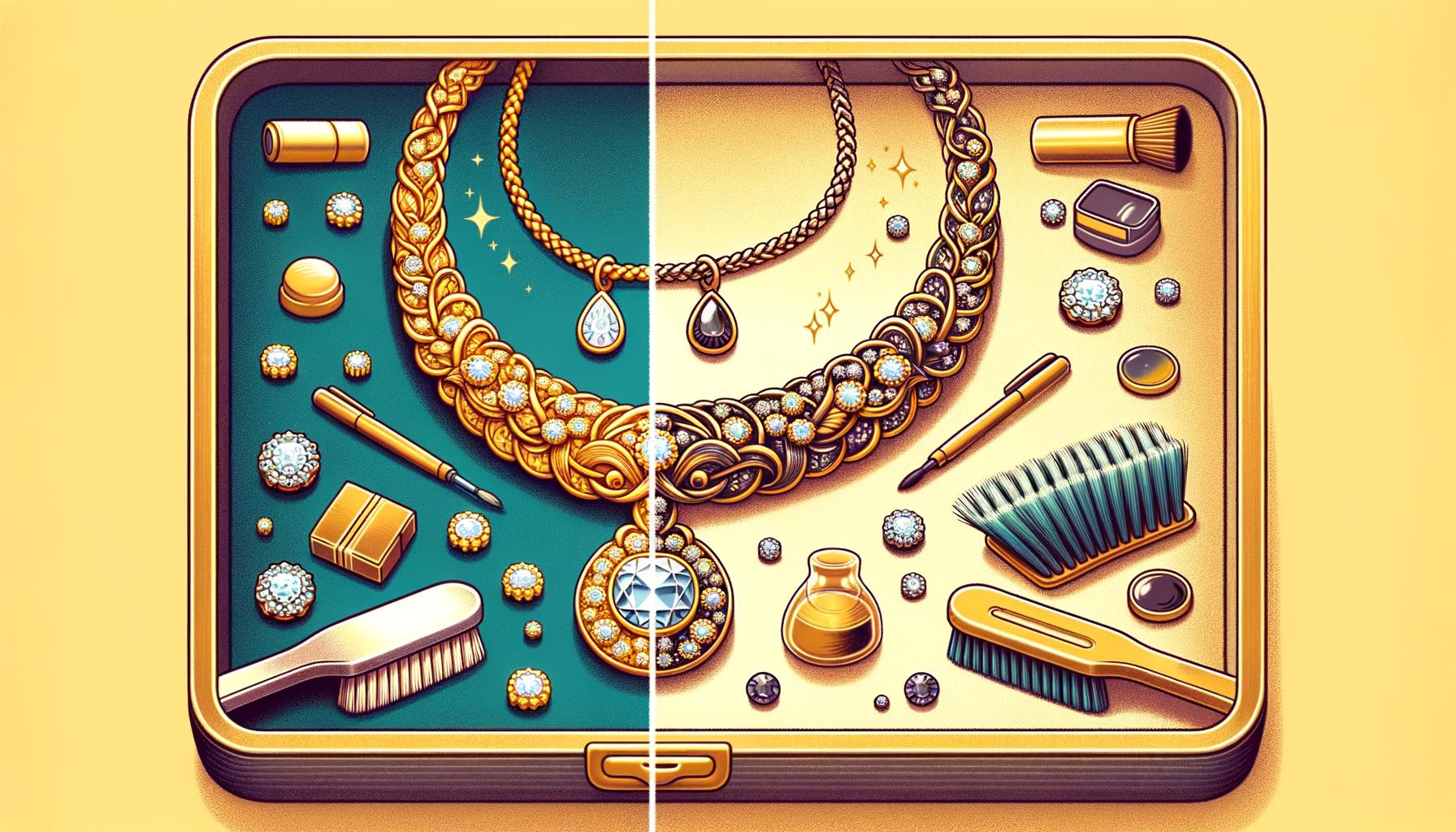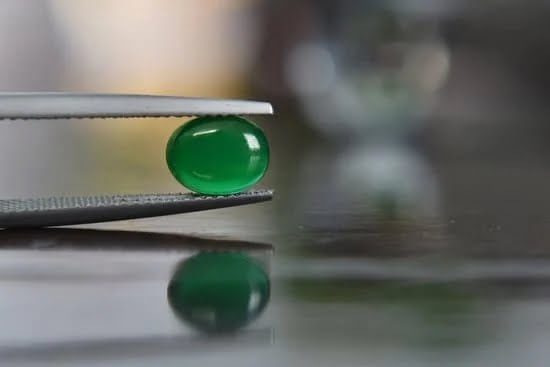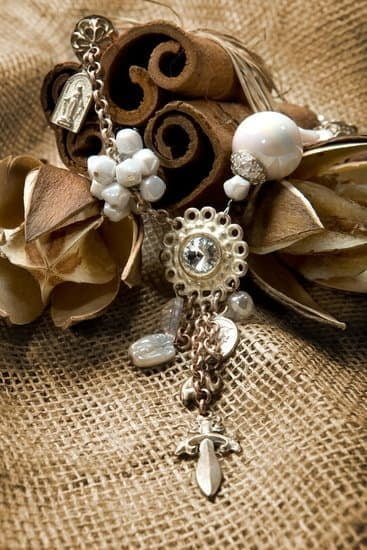The impact of daily wear on jewelry and how to mitigate it is a crucial consideration for anyone who cherishes their adornments. Jewelry often holds significant sentimental value, serving as symbols of special occasions, loved ones, and personal milestones.
Whether it’s a wedding ring, a family heirloom, or a favorite bracelet, the pieces we choose to wear daily become integral parts of our lives. Understanding the effects that everyday activities can have on these treasured items is essential in ensuring their longevity and maintaining their pristine condition.
In this article, we will delve into various aspects of how daily life impacts different kinds of jewelry, from precious metals like gold and silver to gemstones such as diamonds and sapphires. We’ll provide insights into common signs of wear and tear and discuss factors that can accelerate the deterioration process. Real-life examples will illustrate how specific activities contribute to the vulnerability of your cherished pieces.
Moreover, readers can expect practical advice on preventative measures to protect their jewelry from undue damage. Beyond everyday care tips, we’ll also explore cleaning methods suitable for various materials and emphasize the importance of regular professional maintenance.
For those particularly valuable or often-worn items, we will highlight when professional intervention becomes necessary and discuss how insurance can serve as an additional layer of protection. Join us as we navigate through best practices in preserving both the beauty and longevity of your most beloved jewelry pieces while balancing aesthetics with durability in design trends.
How Daily Activities Affect Different Types of Jewelry
Gold and Silver: Beauty Tinged With Vulnerability
Gold and silver are among the most popular materials for jewelry, but they are not immune to the strains of daily wear. Gold, especially in its purest form (24K), is quite soft and malleable. This softness makes it particularly susceptible to scratches and dents during everyday activities such as typing on a keyboard or cooking. Alloys used to strengthen gold, like 14K or 18K gold, fare better but are still vulnerable over time.
Silver, on the other hand, may deal with tarnishing in addition to physical damage. Exposure to air and moisture can lead to oxidation, which forms a dark layer on its surface. Frequent cleaning can mitigate tarnish build-up but also risks scratching the metal if not done properly. Users should be mindful of these factors and perhaps remove their gold and silver pieces before engaging in any rigorous activity.
Gemstones and Diamonds: Hardness Doesn’t Mean Invulnerability
Diamonds might be renowned for their incredible hardness, but even they have weaknesses when subjected to routine tasks. For instance, while diamonds are less likely to scratch than softer gemstones like amethysts or emeralds, they can still chip along their edges if struck against a hard surface suddenly. Moreover, oils from human skin can accumulate on diamonds over time, dulling their brilliance until properly cleaned.
Colored gemstones pose even greater challenges due to varying degrees of hardness; softer stones like opals or pearls require extremely careful handling during daily wear. Baking, bathing, or any such common activity involving exposure to heat or chemicals can affect these precious items adversely. Understanding this aspect of gemstone care is crucial in mitigating long-term damage.
Platinum: The Strong Yet Subtle Survivor
Platinum often boasts remarkable durability compared to other metals used in jewelry-making; its density renders it strangely resistant to physical abrasions relative to gold or silver. However, this does not make it entirely invincible-platinum surfaces might develop a natural patina over months of everyday usage that some find attractive while others do not.
The impact of daily wear on jewelry and how to mitigate it becomes evident particularly with platinum because of its likelihood for minor wear through continuous use rather than sudden incidents leading towards substantial breaks or chips. Regular maintenance like professional polishing can help sustain your platinum jewelry’s original lustre while preserving its structural integrity considerably longer than less durable metals.
Common Signs of Wear and Tear
Daily wear on jewelry, even when taken with the utmost care, can lead to various forms of deterioration over time. One of the most common issues is scratching, particularly for pieces made from softer metals such as gold and silver.
These precious metals are prone to developing fine lines and scratches when they come into contact with harder substances. For instance, wearing a gold ring while performing tasks like cooking or gardening increases its exposure to abrasive surfaces that can mar its appearance.
Tarnishing is another prevalent sign of wear in frequently adorned jewelry, especially those crafted from silver. Silver reacts to sulfur compounds in the air, leading to discoloration that can dull its shine. Everyday activities like swimming in chlorinated pools or exposure to household cleaning chemicals can exacerbate this issue, accelerating the tarnish process. This is why recognizing and addressing the impact of daily wear on jewelry and how to mitigate it becomes crucial for preserving these cherished items.
Gemstones and diamonds, though often considered durable, are not immune to daily wear drags either. Loose settings are a frequent problem for pieces featuring stones. Regular activities such as exercising or lifting objects can displace these stones from their mountings over time. Additionally, gems can chip or crack if struck against hard surfaces or if subjected to extreme pressure situations regularly.
| Common Wear Issue | Jewelry Material/Type |
|---|---|
| Scratching | Gold, Silver |
| Tarnishing | Silver |
| Loose Stones | Gemstone Settings |
| Chipping/Cracking | Gemstones/Diamonds |
Being aware of these common signs of wear and tear is essential for anyone looking to keep their jewelry in pristine condition for as long as possible. Regular inspection and timely maintenance are key strategies in mitigating the adverse effects of daily use on such treasured accessories.
Factors That Accelerate Jewelry Deterioration
The impact of daily wear on jewelry and how to mitigate it starts with understanding the various factors that can accelerate its deterioration. One primary culprit is environmental conditions, such as humidity and exposure to chemicals.
Humidity, for example, can cause metals like silver to tarnish more quickly, while everyday chemicals found in household cleaning products can corrode the surface of precious metals and degrade the integrity of gemstones. Even something as seemingly harmless as sweat can contain salts and oils that gradually wear away at the polish and finish of your jewelry pieces.
Lifestyle Influences
Your lifestyle also plays a significant role in how quickly your jewelry may deteriorate. People who frequently engage in physically demanding activities, such as exercising or gardening, inadvertently expose their jewelry to higher risk of damage through scratches, impacts, or exposure to dirt and debris.
Furthermore, routine actions like washing dishes or using personal care products (lotions, perfumes) can contribute chemicals that speed up tarnishing. Therefore, it’s essential to be mindful of when and where you wear your valuable items to slow down the process of wear and tear.
Cumulative Effects Over Time
Finally, it’s crucial to consider the cumulative effect of continuous use over time. Even if no single day seems particularly hazardous for your favorite necklace or ring, daily repetition compounds minor abrasions into significant wear marks.
Over months and years, this consistent exposure will manifest as visible signs of deterioration-like faded gemstones or thinning metal bands-that can’t easily be reversed without professional intervention. Regularly assessing your activities and opting for preventive measures can greatly reduce these long-term effects.
By being aware of these accelerating factors-environmental conditions, lifestyle influences, and cumulative effects-you’ll be better equipped to take precautions. This proactive approach will not only preserve the aesthetics but also maintain the structural integrity of your treasured pieces for years to come.
Preventative Measures to Protect Your Jewelry
When it comes to protecting your treasured jewelry, the right steps can make a significant difference in preserving its beauty and longevity. One of the most effective preventative measures is to remove jewelry during activities that may expose it to harsh conditions or potential damage.
Whether you are washing dishes, gardening, swimming, or engaging in strenuous exercise, taking off your rings, bracelets, or necklaces can prevent scratches, tarnish, and other forms of wear. By minimizing exposure to chemicals and rough surfaces, you significantly reduce the impact of daily wear on jewelry and how to mitigate it.
Proper storage also plays a critical role in maintaining your jewelry’s condition over time. Investing in a quality jewelry box with separate compartments can keep different items from rubbing against each other and causing unnecessary abrasion. For an added layer of protection, consider using soft cloth pouches or anti-tarnish strips designed specifically for precious metals. Additionally, keeping your jewelry in a cool, dry place away from direct sunlight helps protect against fading and discoloration caused by UV rays.
Another valuable preventative measure involves using protective coatings available on the market. These specialized products create a barrier between the metal or gemstone surface and external elements that could cause harm. Some jewelers offer services to apply these coatings professionally; otherwise, DIY kits are available for home use-just make sure to follow instructions carefully for optimal effectiveness.
| Preventative Measure | Benefit |
|---|---|
| Removing Jewelry During Activities | Prevents scratches and exposure to chemicals |
| Proper Storage | Avoids abrasion and environmental damage |
| Use of Protective Coatings | Acts as a barrier against external elements |
By adopting these simple yet effective habits, you not only extend the lifespan of your favorite pieces but also ensure they continue to shine brilliantly through years of daily wear.
Cleaning and Maintenance Tips
Gentle Cleaning Techniques for Different Materials
Keeping your jewelry clean not only enhances its appearance but also prolongs its life. For gold pieces, a mixture of warm water and mild dish soap works wonders. Be sure to soak the items briefly, then gently scrub with a soft-bristled toothbrush before rinsing and drying with a lint-free cloth.
Silver jewelry can tarnish quickly when exposed to air and moisture. To clean silver, use a specialized silver polish or create a homemade concoction of baking soda and water to form a paste; carefully rub it onto the piece using a microfiber cloth.
For more delicate items like pearls or opals, it’s crucial to avoid soaking them in water as these gemstones are porous. Instead, gently wipe each piece with a damp, soft cloth after wearing it. This helps remove oils from your skin that can seep into the gems and cause damage over time.
The Impact of Daily Wear on Jewelry and How to Mitigate It With Regular Maintenance
Regular maintenance is key to mitigating the impact of daily wear on your jewelry. Daily exposure to elements such as sweat, dust, perfumes, and lotions can gradually weaken settings or erode metal surfaces if not properly attended to. Implementing these cleaning tips into your routine will help mitigate some of this everyday wear and tear.
While there’s much you can do at home, professional maintenance should not be ignored. Take your frequently worn pieces in for professional check-ups at least once a year. Jewelers have the tools needed to polish out scratches, tighten loose settings, and thoroughly clean complex designs without causing damage.
DIY vs Professional Services
Deciding between DIY cleaning methods and seeking professional help depends largely on the type and value of the jewelry in question. Simple gold bands or sterling silver items are generally safe for home cleaning routines as long as you’re cautious about which chemicals you use. However, intricate antennal systems or valuable heirloom pieces benefit significantly from professional care.
Professional jewelers can provide ultrasonic cleaning services that remove grime stuck in places impossible to reach by hand. They often perform detailed inspections during cleanings that spot potential problems earlier than an untrained eye might notice-such as prongs wearing thin or clasps starting to fail-thus preventing loss or further damage down the line.
Regularly pairing at-home maintenance with occasional professional services is an excellent strategy for keeping all types of jewelry looking their best while extending their lifespan considerably.
When to Seek Professional Help
Knowing when to enlist a professional jeweler’s expertise can make all the difference in maintaining the integrity and beauty of your precious pieces. If you notice significant signs of wear such as cracked gems, severely scratched metals, or stones that have come loose from their settings, it’s crucial to seek professional assistance immediately. Ignoring these issues can lead to more severe damage and even loss of valuable components, which is why prompt attention is essential.
Another indicator that it’s time for a jeweler’s intervention is persistent tarnish or discoloration that home cleaning methods can’t rectify. Certain advanced cleaning techniques and specialized equipment available only to professionals can effectively restore your jewelry’s original luster. Additionally, routine inspections by a jeweler can preemptively diagnose issues like metal fatigue or weakened prong settings before they result in catastrophic failures.
Professionals also offer services beyond mere repair. For instance, they can reshape rings that no longer fit comfortably due to weight changes or over time. They might also redesign outdated pieces into modern styles while preserving their sentimental value. Furthermore, annual check-ups with a trusted jeweler are vital for longevity; these visits allow for thorough inspections and necessary maintenance work such as re-tipping prongs or restringing pearls.
| Issue | Reason for Professional Help |
|---|---|
| Cracked Gems | Requires precision repair tools and skills |
| Loose Stones | Needs secure resetting to prevent loss |
| Metal Reshaping | Necessary for comfort and fit adjustments |
| Tarnish Removal | Professional-grade cleaning techniques are superior |
The Role of Insurance in Protecting Your Investment
Jewelry insurance is a crucial component in safeguarding your valuable pieces against unforeseen circumstances. Whether it’s theft, loss, or damage, having the right insurance policy can provide peace of mind and financial protection. Given the impact of daily wear on jewelry and how to mitigate it through proper care methods, insurance adds an additional layer of security.
Standard homeowner’s or renter’s insurance policies often have limitations on coverage for high-value items like jewelry. Therefore, obtaining a specialized jewelry insurance policy is essential to ensure comprehensive protection.
When choosing an insurance policy, it’s important to understand what the coverage entails. A good jewelry insurance policy should cover a wide range of potential issues including accidental damage, mysterious disappearance, and even coverage outside your home or while traveling.
Make sure to ask about specific scenarios such as losing a stone from its setting or having a piece stolen during a vacation abroad. Typically, these specialized policies allow for worldwide coverage which ensures you’re protected no matter where you go.
To find the right policy for your needs, start by getting your pieces appraised by a certified professional to determine their current market value. This will help you secure an adequate amount of coverage without underinsuring your items. Look into different insurers and compare their offerings; some companies specialize in jewelry or valuable items and might offer more tailored options than regular insurers. Consider factors such as premium costs, claim processing times, and customer reviews when making your decision.
- Ensure worldwide coverage is included
- Get each piece appraised by a certified professional
- Compare policies from different insurers
- Check customer reviews and claim processing times
In summary, investing in jewelry insurance not only helps protect against catastrophic losses but also acknowledges the intrinsic and sentimental value these pieces hold. By understanding the parameters of various policies and choosing one that aligns with your lifestyle and needs, you ultimately reinforce the longevity and security of your cherished investments.
Trends in Durable Jewelry Design
In recent years, the jewelry industry has seen a significant shift towards designs that marry aesthetics with practicality. A growing number of designers are focusing on creating pieces that withstand the rigors of daily wear while maintaining their beauty. This trend acknowledges the impact of daily wear on jewelry and how to mitigate it by incorporating durable materials and thoughtful design elements.
One key trend is the use of alternative metals such as titanium, tungsten, and stainless steel. These materials are inherently more scratch-resistant and less prone to tarnishing compared to traditional metals like gold and silver. Additionally, many companies are experimenting with unique metal blends that offer enhanced durability without compromising on appearance. For instance, certain high-end jewelry brands have started using proprietary alloys that combine the luster of precious metals with the resilience of industrial-grade materials.
Another notable trend is the incorporation of protective settings for gemstones. Designers are increasingly using bezel settings or halo designs to provide extra security for stones, reducing the likelihood of them becoming loose or damaged over time. This approach is not only practical but also stylish, as these settings can enhance the visual appeal of gemstones. Moreover, some brands have started layering coatings over their finished pieces to act as an invisible shield against scratches and environmental damage.
Consumers are also gravitating towards minimalist designs that offer robustness through simplicity. Pieces with fewer intricate details tend to be stronger and less susceptible to catching on clothing or other objects, which can cause damage. The minimalist aesthetic aligns with modern fashion trends while providing a solution to prolonging the lifespan of every piece in one’s collection.
Overall, these innovations demonstrate a clear response to consumer demand for jewelry that stands up better against everyday wear and tear. By prioritizing durability alongside design, jewelers are helping consumers enjoy their adornments longer without sacrificing style or elegance.
Conclusion
Maintaining the allure of your treasured pieces while ensuring they stand the test of time might seem daunting, but it is entirely achievable with the right approach. One crucial aspect to consider is understanding (the impact of daily wear on jewelry and how to mitigate it). By educating yourself about the different factors that contribute to jewelry deterioration and adopting preventative measures, you can significantly extend the lifespan of your precious items.
Several strategies can help balance beauty with longevity in your jewelry collection. Here are key considerations:
- Removing Jewelry During High-Risk Activities: Take off rings, bracelets, and necklaces when engaging in activities that may result in physical damage or exposure to harsh substances.
- Proper Storage: Utilize specialized cases or soft pouches to store individual pieces, preventing them from scratching each other.
- Regular Cleaning: Follow safe cleaning practices at home using appropriate solutions for different materials. Additionally, schedule professional cleanings periodically.
Moreover, investing in protective products such as jewelry coatings and ensuring insurance covers your valuable possessions further aids in preserving their condition. With these thoughtful practices and an ongoing commitment to care, aficionados of fine jewelry can enjoy both aesthetic elegance and enduring durability sans compromise. As you navigate through owning and wearing exquisite pieces, keep refining your habits and stay informed about new developments within the realm of jewelry maintenance.
Additional Resources and Further Reading
In conclusion, understanding the impact of daily wear on jewelry and how to mitigate it is crucial for preserving your cherished pieces. Each time we adorn ourselves with necklaces, rings, bracelets, or earrings, these items are subjected to various elements that can lead to their gradual deterioration.
By being mindful of our daily activities and how they affect different types of jewelry materials-whether it’s gold losing its luster from exposure to chemicals during cleaning or gemstones becoming loose from constant wear-we can take proactive steps to ensure our jewelry remains as beautiful as the day we first acquired it.
Adopting preventive measures is key to safeguarding your collection. This includes simple practices such as removing jewelry before engaging in strenuous activities or coming into contact with harsh substances, storing pieces properly in soft-padded cases, and using protective coatings designed specifically for delicate items.
Regular cleaning and maintenance, both at home and through professional services, also play a vital role in mitigating the adverse effects of daily wear. These habits not only extend the lifespan of your treasures but also maintain their aesthetic appeal over time.
Investing in durable designs and considering jewelry insurance further adds layers of protection for your valuable items. With trends in jewelry design increasingly focusing on durability without compromising beauty, choosing resilient pieces can be a smart long-term strategy.
By combining thoughtful care routines with these well-informed choices, you can continue to enjoy the elegance and significance of your jewelry for years to come. Always remember that balancing beauty with longevity enhances not just the physical condition of your pieces but also their sentimental value-a true testament to their timeless allure.
Frequently Asked Questions
How Do I Stop Wearing Too Much Jewelry?
To stop wearing too much jewelry, start by evaluating your current collection and selecting pieces that truly reflect your personal style. Consider focusing on one or two statement items and keeping other accessories minimal to avoid an overdone look.
Experiment with different combinations to see which ones complement your outfits best without overwhelming them. Cultivating mindfulness about why and how you’re wearing each piece can also help in making more deliberate choices.
How Do You Protect Your Skin From Jewelry?
Protecting your skin from jewelry involves ensuring the materials are compatible with your skin type. Opt for hypoallergenic metals like stainless steel, titanium, or gold if you have sensitive skin.
Regularly cleaning both your jewelry and skin can prevent irritation and allergic reactions caused by dirt or oils. It’s also wise to remove jewelry before engaging in activities that cause sweating or exposure to harsh chemicals, such as swimming or cleaning, which can exacerbate skin issues.
Is It OK to Wear the Same Jewelry Everyday?
Wearing the same jewelry every day is perfectly acceptable if it aligns with your personal style and comfort preferences. Many people find sentimental value in their daily pieces, like wedding rings or heirloom necklaces, which makes them special and meaningful to wear consistently.
However, it’s important to regularly clean these everyday items to maintain their appearance and hygiene. Diversifying occasionally with different pieces can also help keep your overall look fresh and exciting.

Welcome to my jewelry blog! My name is Sarah and I am the owner of this blog.
I love making jewelry and sharing my creations with others.
So whether you’re someone who loves wearing jewelry yourself or simply enjoys learning about it, be sure to check out my blog for insightful posts on everything related to this exciting topic!





